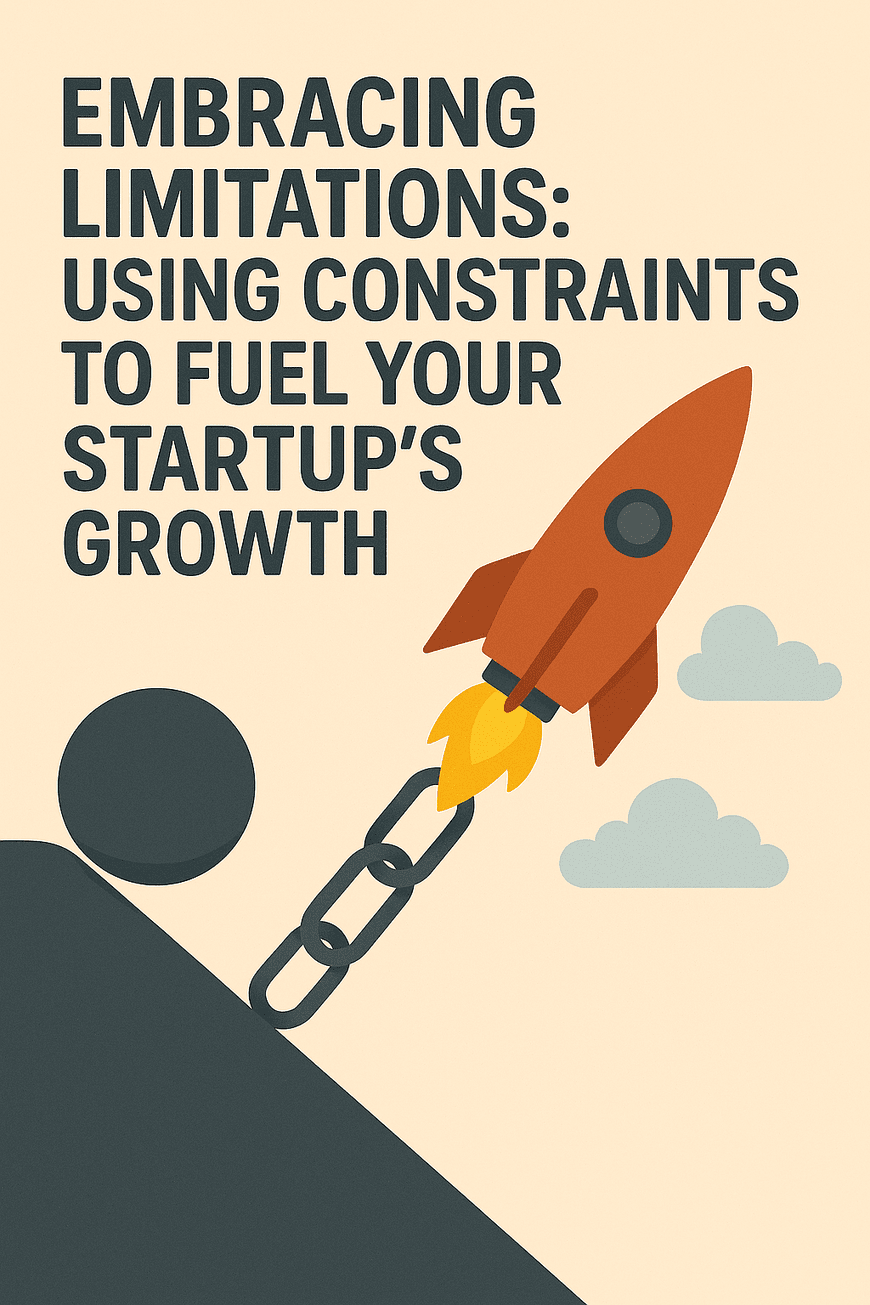
23 Apr Embracing Limitations: Using Constraints to Fuel Your Startup’s Growth
Banner image generated using ChatGPT, OpenAI, April 22, 2025
Startup founders often wish for abundant resources—deep funding, a large team, and a product that sells itself. But the reality is almost always the opposite: shoestring budgets, tiny teams, and products that are still finding their way. While these constraints may seem like obstacles, the best entrepreneurs focus on and know how to transform those constraints into advantages.
The Power of Constraints: Why Less Can Be More
Constraints force startups to get creative. With limited money and manpower, founders can’t simply throw resources at problems. Instead, they must:
- Adapt products rapidly in response to real customer feedback
- Focus on the essentials and cut out distractions
- Build closer relationships with early users, leading to deeper insights and authentic innovation
As David Schonthal, clinical professor of entrepreneurship at Kellogg School, puts it: “The interesting thing about constraints is how they can be used positively.”1
Questioning Assumptions: Focusing on Learning, Not Just Validating
A common pitfall for startups is building solutions based on assumptions rather than real user behavior. In India, this risk is amplified by diverse consumer habits and regional differences. Entrepreneurs must resist the urge to seek only validation and instead immerse themselves in the field—observing, listening, and iterating based on authentic feedback.
For instance, a healthtech startup in rural India might assume that a digital solution will be readily adopted, only to find that local healthcare workers prefer traditional methods. The lesson: in the early days, go out to learn, not to validate. Watch how users interact with your product in their real environments, and be prepared to pivot based on what you see, not just what you hear.
Turning Constraints into Strategic Advantages
1. Frugal Innovation as a Mindset
The Indian ethos of jugaad is about doing more with less. Startups routinely bootstrap, leveraging family and community networks for early support, and finding creative ways to solve problems with minimal resources. This approach not only conserves cash but also fosters solutions that are inherently scalable and resilient in resource-constrained markets.
It is quite a challenge to access computers for rural schools and low-cost private schools – where even if they have access to computers thanks to some philanthropic help, then getting a teacher to teach is another big challenge. Solving for both and helping disadvantaged students learn coding skills is Next Skills 360 – incubated by us. They have developed a patented coding toy called ProGame that helps students without access to computers to develop logical thinking skills essential for coding.
2. Diversity as a Design Imperative
India’s vast cultural and linguistic diversity can be daunting, but it’s also a goldmine for innovation. Startups that tailor their offerings to local nuances—be it language, tradition, or purchasing power—are more likely to succeed. This demands close customer contact and rapid adaptability, both of which are easier for small, agile teams. Take myUDAAN for example, one of our portfolio startups – it provides mobility & care solutions for the elderly and individuals with mobility challenges, connecting users with products and services that enhance independence and quality of life.
3. Leveraging Ecosystem Support
Despite constraints, India’s startup ecosystem is buoyed by government initiatives (Startup India, Atal Innovation Mission), incubators, and a growing network of angel investors and accelerators. Startups can offset their limitations by tapping into these resources for funding, mentorship, and infrastructure.
4. Technology as a Force Multiplier
Digital tools, cloud platforms, and AI are levelling the playing field for Indian startups, allowing them to reach customers in remote areas, optimize operations, and scale rapidly even with limited staff and capital. The rise of affordable smartphones and internet connectivity has unlocked new markets in Tier-2 and Tier-3 cities, making technology adoption a strategic necessity.
5. Strategic Partnerships and Open Innovation
Indian startups increasingly collaborate with corporates, NGOs, and even competitors to overcome distribution and market access challenges. These partnerships can provide reach, credibility, and shared resources, allowing startups to focus on their core innovation.
Innovation around resources requires such coming together of stakeholders, especially when the resource is water. One of our startups, The Rainwater Project is fighting India’s water crisis by working closely with corporate partners, NGOs, Govt. and the community at large.
Conclusion: Embrace Your Startup’s Constraints
Constraints are not just hurdles—they are the very conditions that spark innovation, foster resilience, and drive growth. By embracing frugality, questioning assumptions (a topic that needs more attention), leveraging local insights & staying close to customers, and tapping into the broader ecosystem, startups can unlock creative solutions and build a business that thrives not despite the constraints they face, but because of them.
Ravi Sarkunan leads IIITH’s Social Incubator and has been working closely with social impact startups (both tech-based and otherwise) for the past 10+ years.


